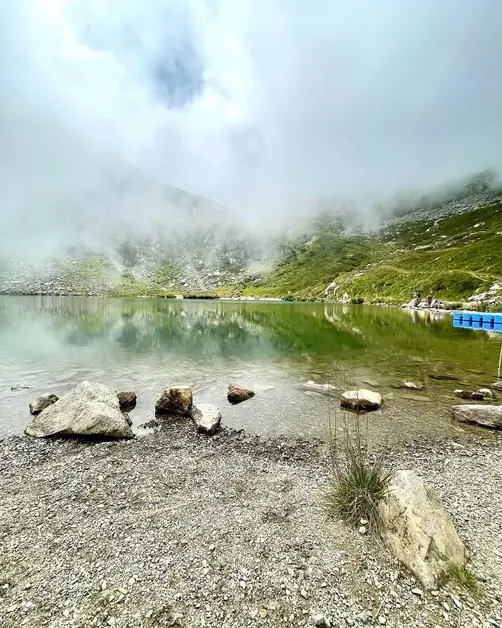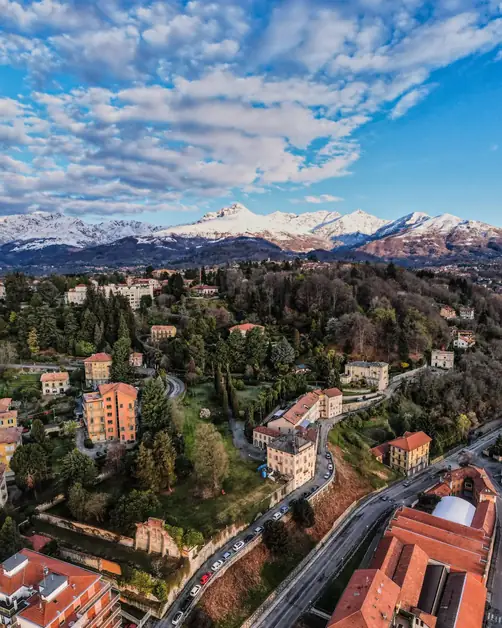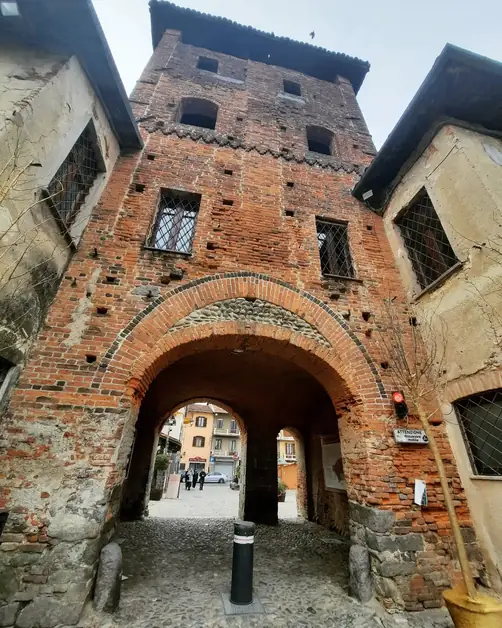Monte Mucrone adventure between landscapes and nature
Monte Mucrone is the symbol mountain of Biella, perfect for adventures and breathtaking views.

Where is Monte Mucrone located and why is it considered the symbol mountain of Biella?
Monte Mucrone, with its 2331 meters of altitude, is located in the Biella Alps, above the Sanctuary of Oropa. It is the symbol mountain of the province of Biella and its unmistakable profile stands out clearly from every point of the plain. Anyone observing the Mucrone from afar recognizes it immediately: its decisive shape seems to separate itself from the rest of the mountain range, almost indicating the direction to reach the Biella peaks. Climbing Monte Mucrone means experiencing one of the most authentic and panoramic experiences in Piedmont.
How do you get to Monte Mucrone?
The starting point for the hike to Monte Mucrone is the Sanctuary of Oropa, reachable from Biella in about 20 minutes by car. From the sanctuary, you go up to the Upper Basilica, where the Oropa cable car is located, which takes you to the Oropa Sport station, at 1870 meters above sea level. From here, the walking path to the summit begins. The trail, marked with the D24 sign, is well signposted and allows you to reach the top in about three hours of walking round trip. For those who love the mountains but prefer less demanding routes, it is possible to stop at Lake Mucrone or at the Lake Pass, from which you can still enjoy splendid views.
How difficult is the hike to Monte Mucrone?
The hike to Monte Mucrone is considered of medium difficulty, but it has some steep and challenging sections, suitable for hikers with a minimum of experience and good physical condition. The total elevation gain is about 450 meters, and the ascent requires attention especially in the final sections, where the path becomes rockier and steeper. In spring and autumn, care must be taken for residual snow and ice, which can make the stones and rocks slippery. The use of trekking poles is recommended, as well as mountain boots with good grip.
What is the route to reach the summit of Monte Mucrone?
From the Oropa Sport station, follow the D24 trail to the Bersagliere Fountain, a few meters from Lake Mucrone. This is the ideal point for a short break and to refill water, as there are no other sources along the way. From here, the trail continues to the right of the fountain and climbs towards the Lake Pass (2026 meters), a panoramic saddle from which you can enjoy the view of the lake and the Alta Valle Elvo. From this point, the path becomes more challenging: the trail climbs to the left, facing a rocky and steep terrain up to the summit. A short section with a fixed rope handrail helps to overcome a slightly exposed passage, making the route safer even for those who are not experienced climbers.
What will you encounter along the Mucrone trail?
Climbing towards the top, you cross stony areas, rocky outcrops, and alpine meadows dotted with mountain flowers. Along the way, you will also encounter the old Anticima cable car station, now out of service: a fascinating ruin that testifies to the time when Mucrone was a destination for high-altitude tourism as early as last century. From the platform in front, you can admire a spectacular view of Lake Mucrone, but it is important not to enter the structure, which is not safe. Continuing, the trail remains a few meters below the ridge, alternating grassy sections with rocky steps until finally reaching the main summit.
What can you see from the summit of Monte Mucrone?
From the top of the Mucrone, the view is magnificent. The large summit cross, visible even from the plain, marks the second peak, slightly lower than the main one. From here, you can admire the Western Alps, from Monviso to the mountains of Lombardy, and on clear days, the gaze stretches all the way to the Po Valley. The feeling is that of being suspended between sky and earth, with the city of Biella at your feet and the silence of the mountain all around.
How long does it take for the hike to Monte Mucrone?
The route from the Oropa Sport station to the summit of Mucrone takes about an hour and a half to ascend and an hour and a half to descend. The time may vary based on pace and terrain conditions. Those who want to enjoy the view at leisure can dedicate an entire morning to the hike, including photo stops or a packed lunch near the lake.
What can you do around Monte Mucrone?
Around the Mucrone, there are other beautiful natural destinations. From the Lake Pass, a trail descends towards the Delfo and Agostino Coda Refuge, one of the most loved by Biella hikers. Those who prefer a more tranquil hike can stop at Lake Mucrone, a small body of water nestled among the rocks, perfect for relaxing or taking photographs. On summer days, it is also possible to take the cable car up to Oropa Sport and then walk only part of the trail, still enjoying splendid views without tackling the entire ascent.
What are the best times to climb Monte Mucrone?
The best times for the hike are from June to October, when the trail is free of snow. In spring and autumn, the path may be snow-covered in some sections: it is advisable to check before departure and bring suitable clothing, gloves, and a hat. In summer, the temperature at altitude is cool, ideal for those who want to escape the heat of the plain.
How to prepare for the hike to Monte Mucrone?
It is important to start with the right equipment: trekking boots, poles, water, and clothing suitable for climate changes. The weather in the mountains can change rapidly, so it is always advisable to bring a windproof or waterproof jacket. Those departing from Biella can purchase the cable car ticket directly at the Oropa station. The parking lot at the Sanctuary of Oropa is large and free, a perfect starting point for the hike.
What to do after climbing Monte Mucrone?
After the hike, you can descend to Oropa to visit the Sanctuary, one of the most important religious sites in Italy, or stop for lunch at one of the restaurants or refuges in the area. Many hikers choose to end the day with a visit to the Museum of Treasures of Oropa or a walk in the Botanical Garden. For those staying overnight, the B&Bs and hotels in Oropa offer cozy accommodations, perfect for those who want to experience the mountain even in the evening, admiring the sunset over the Biella peaks.


